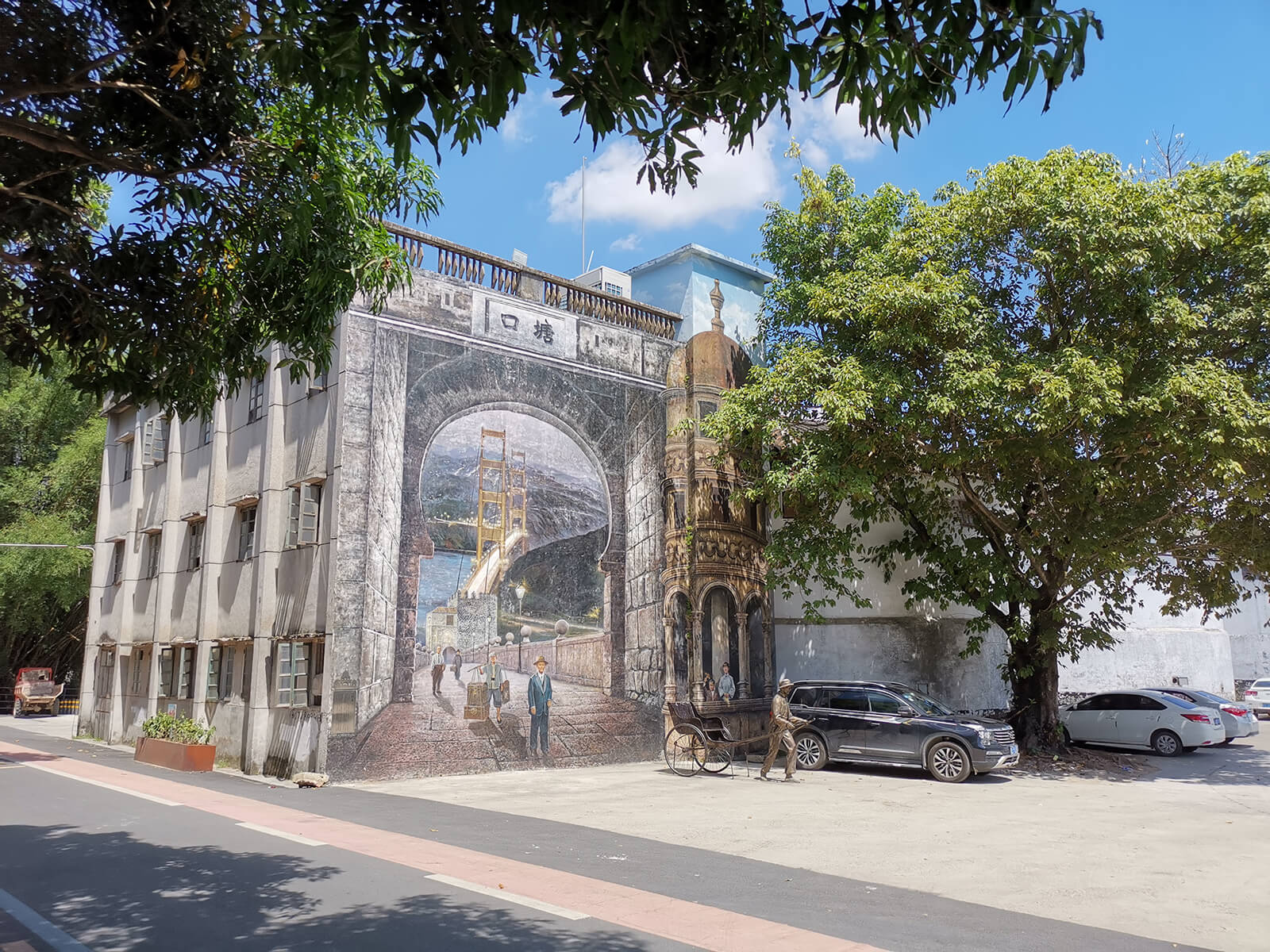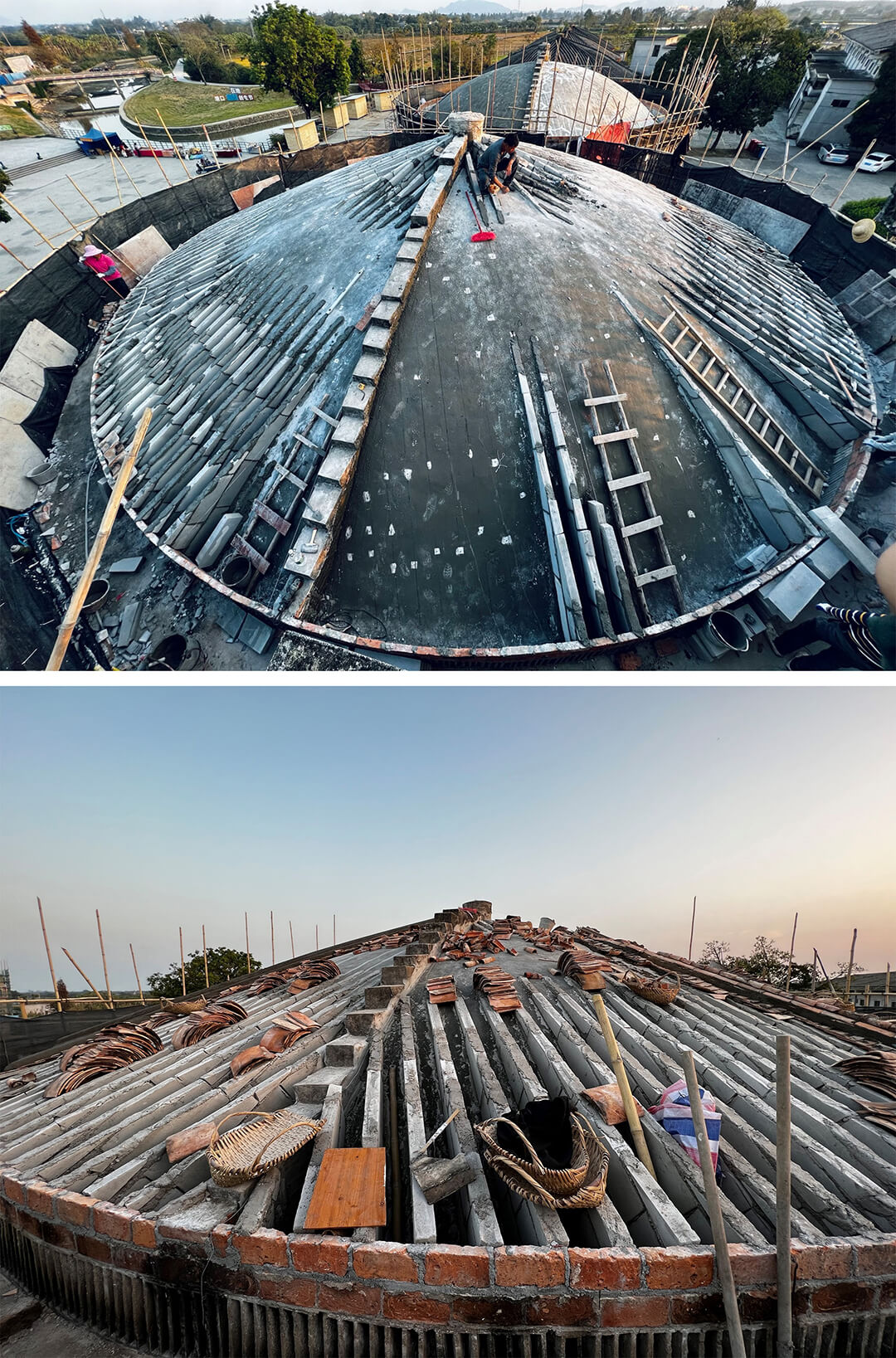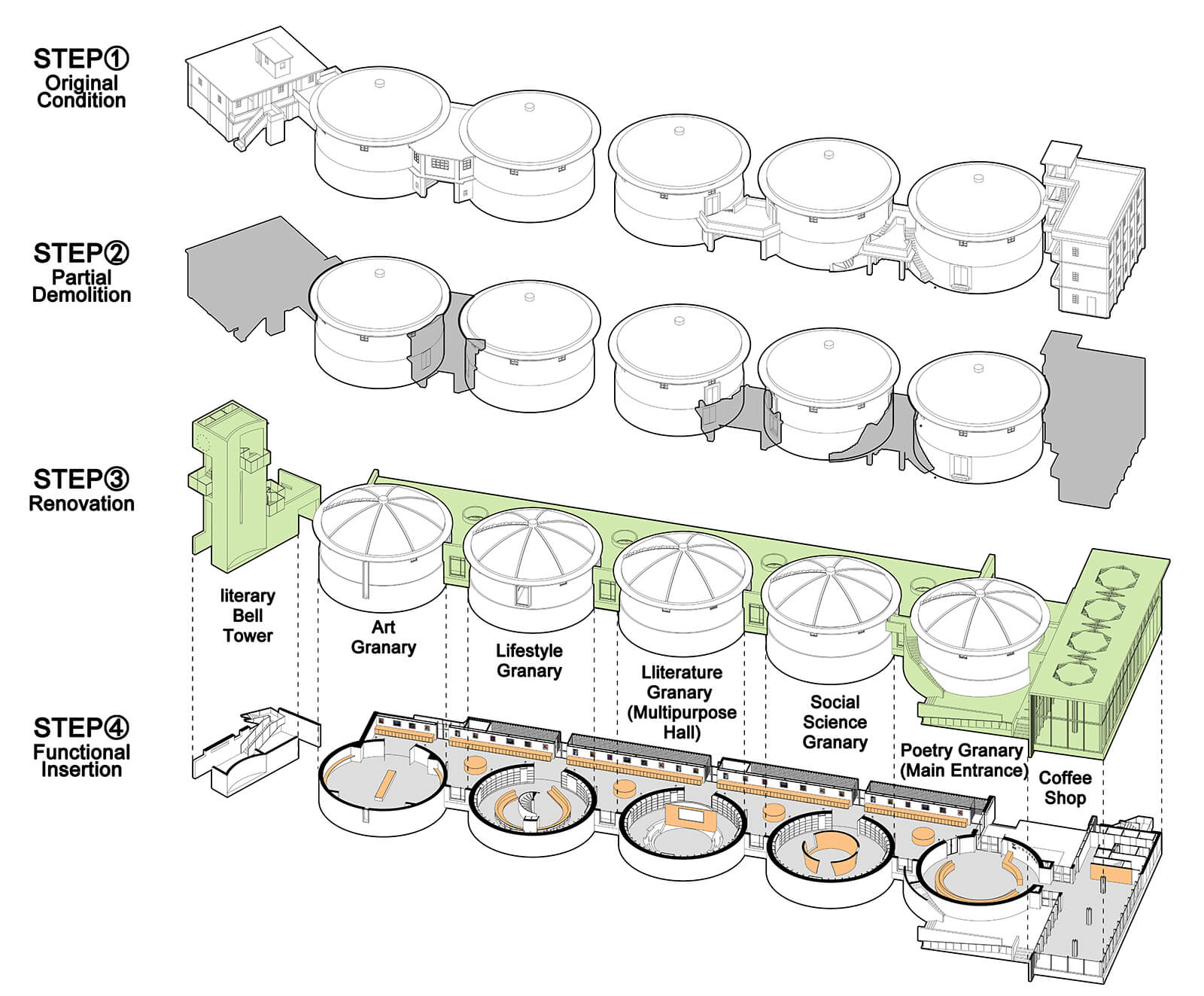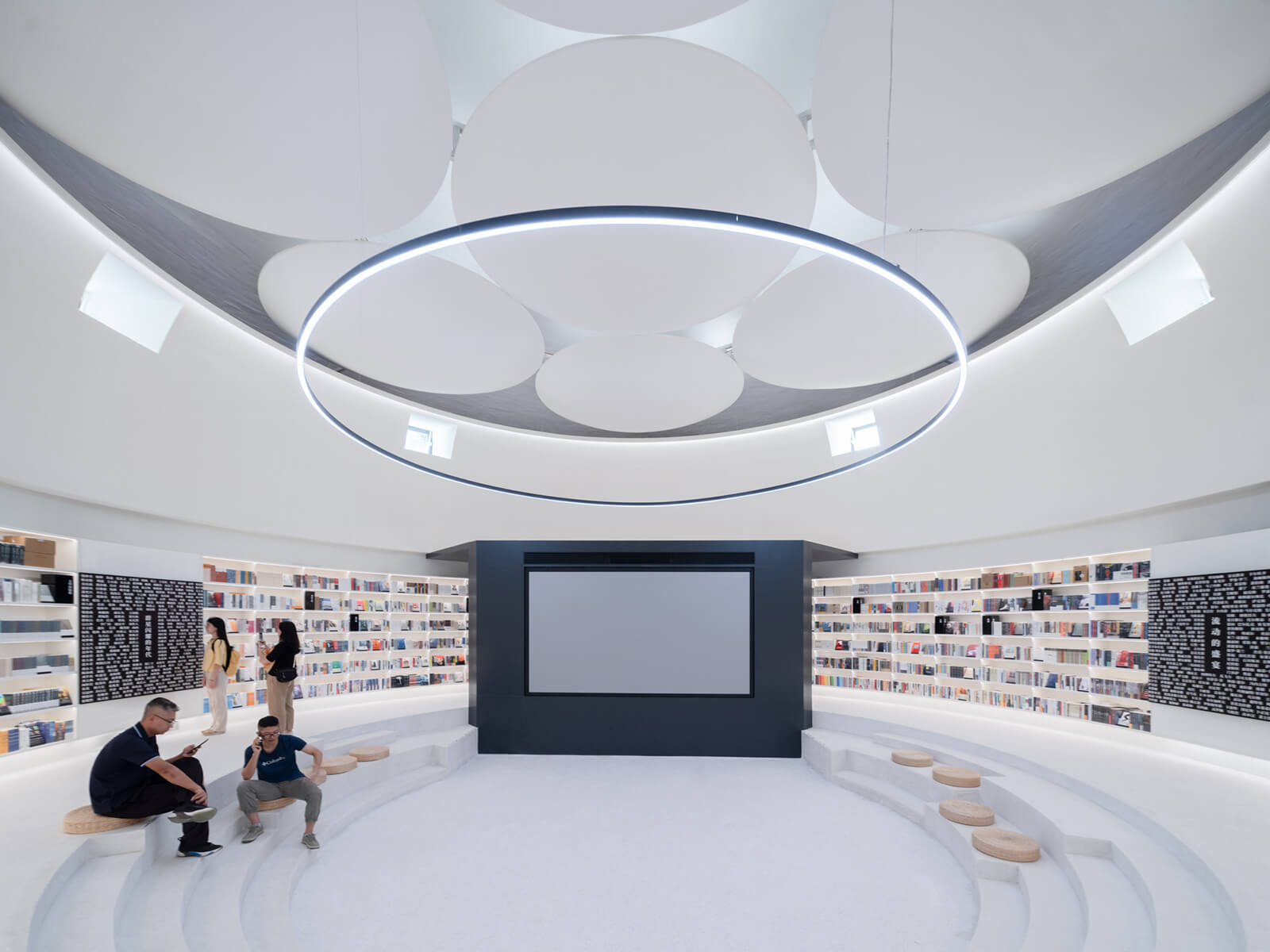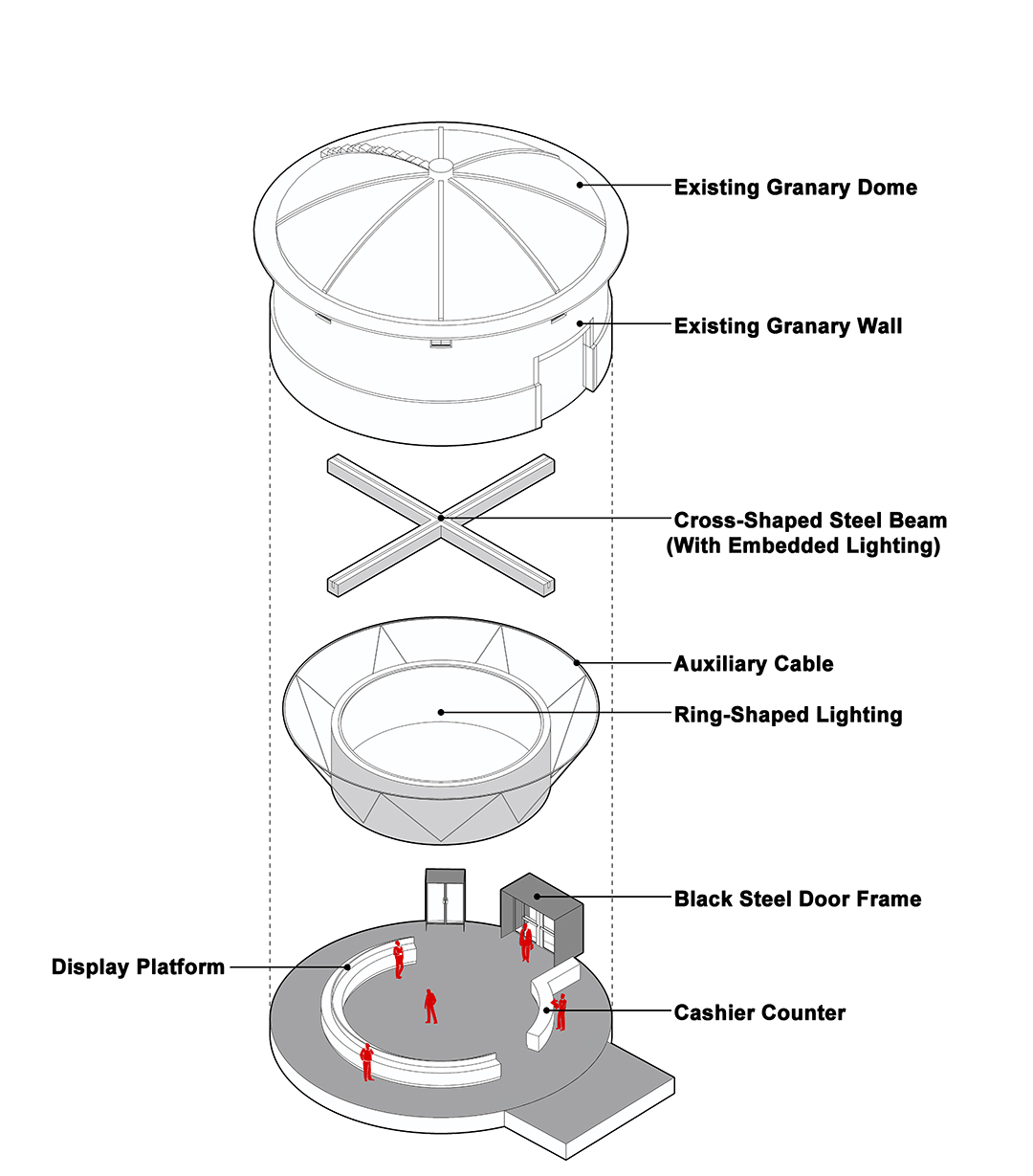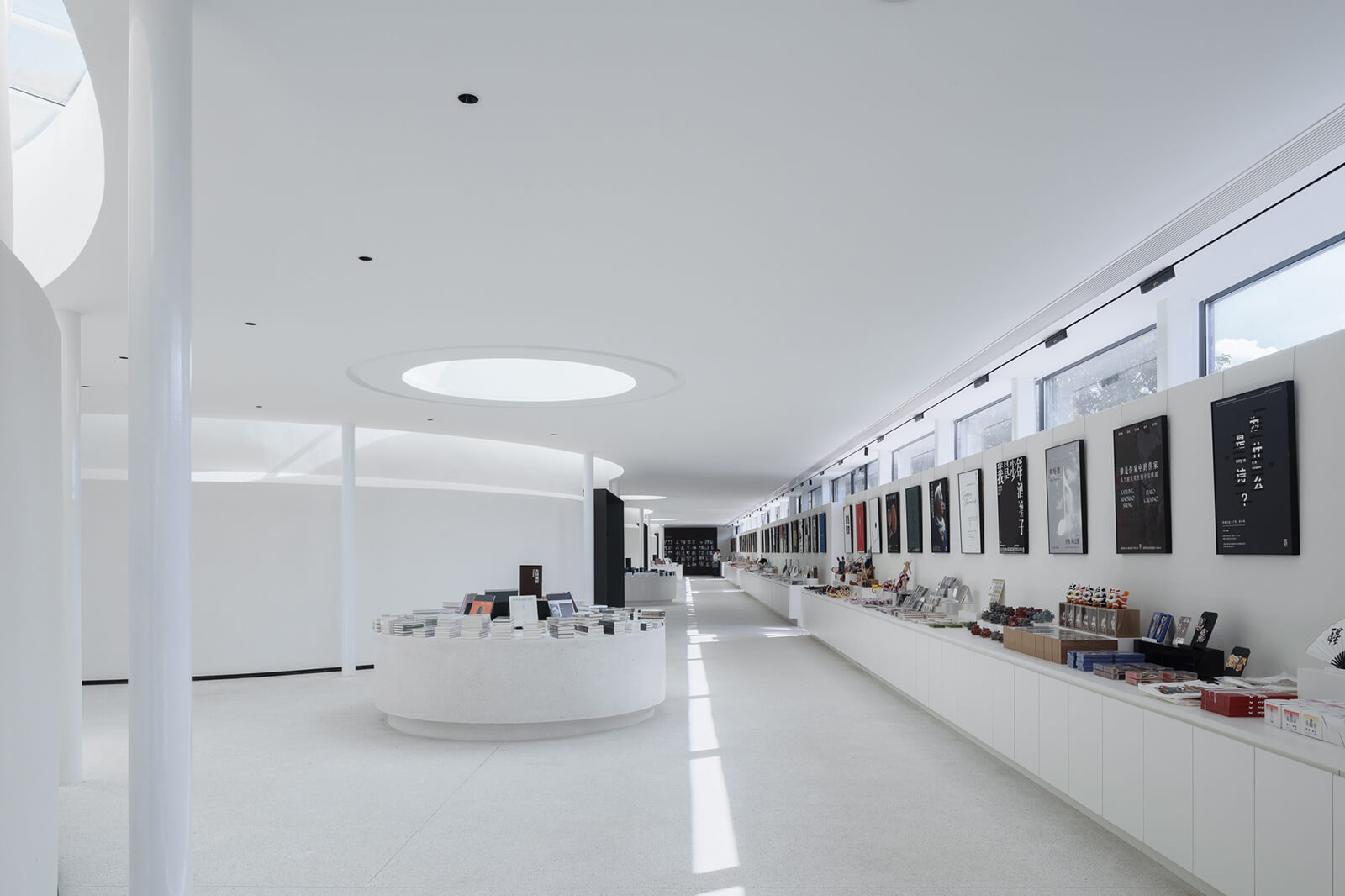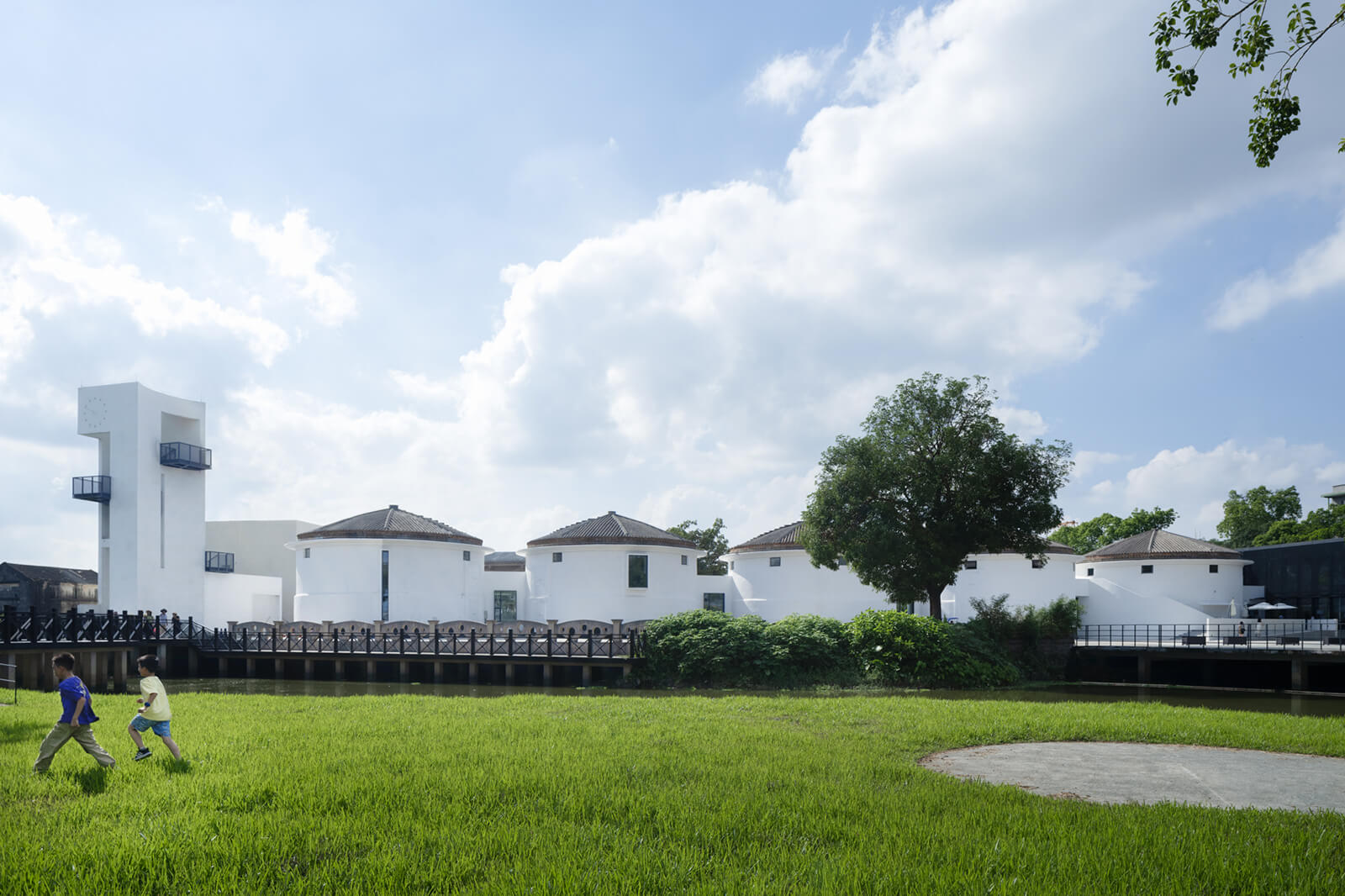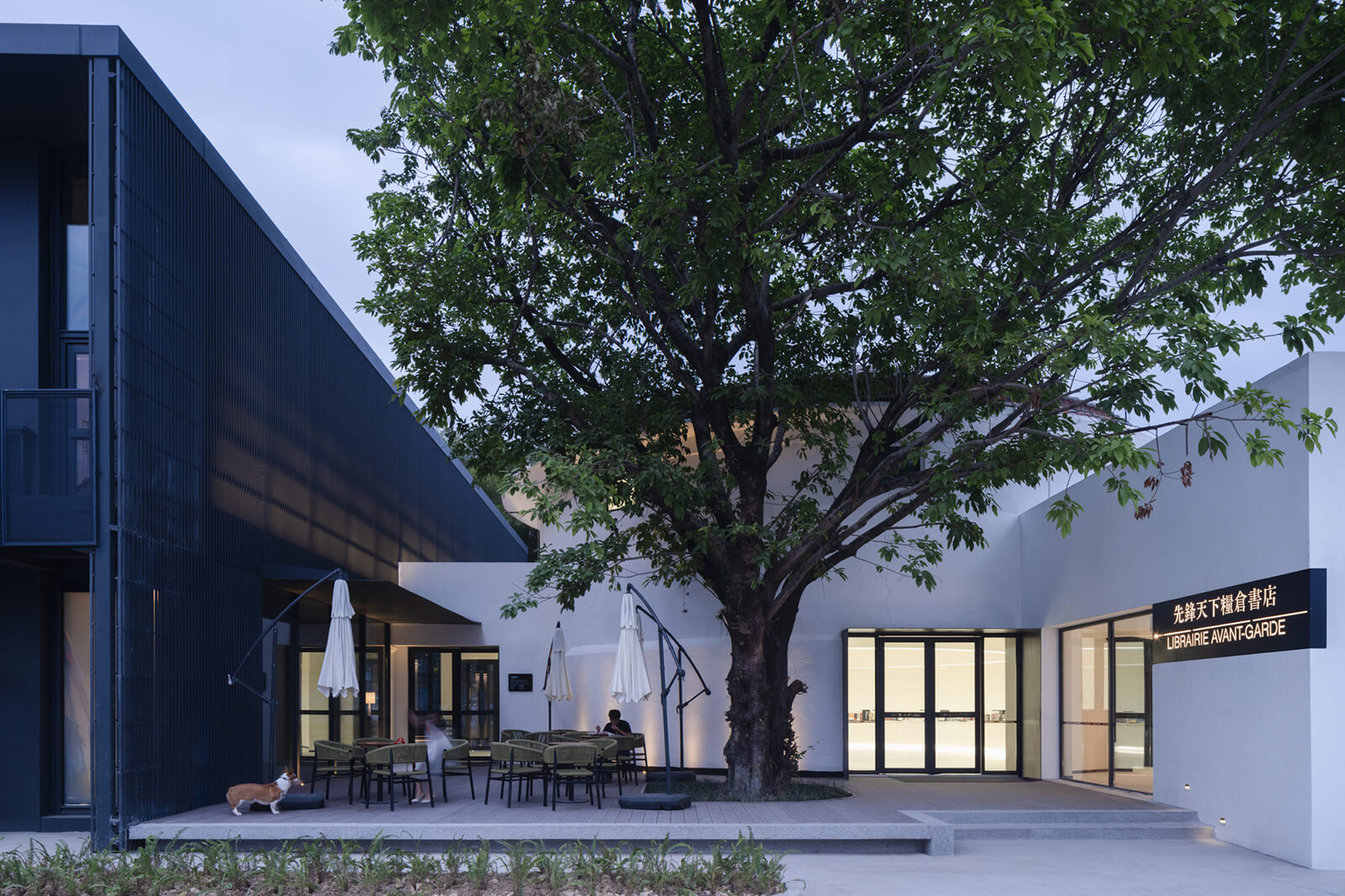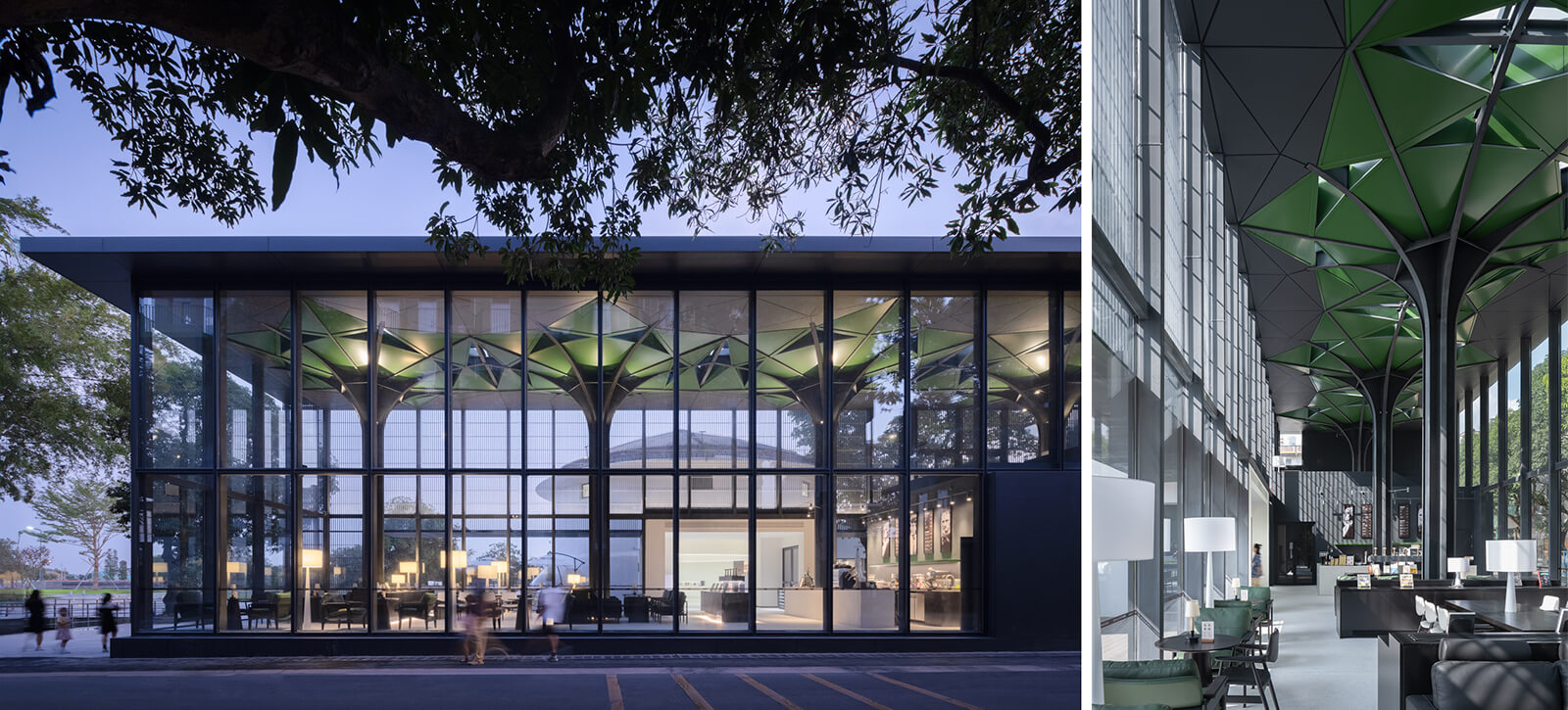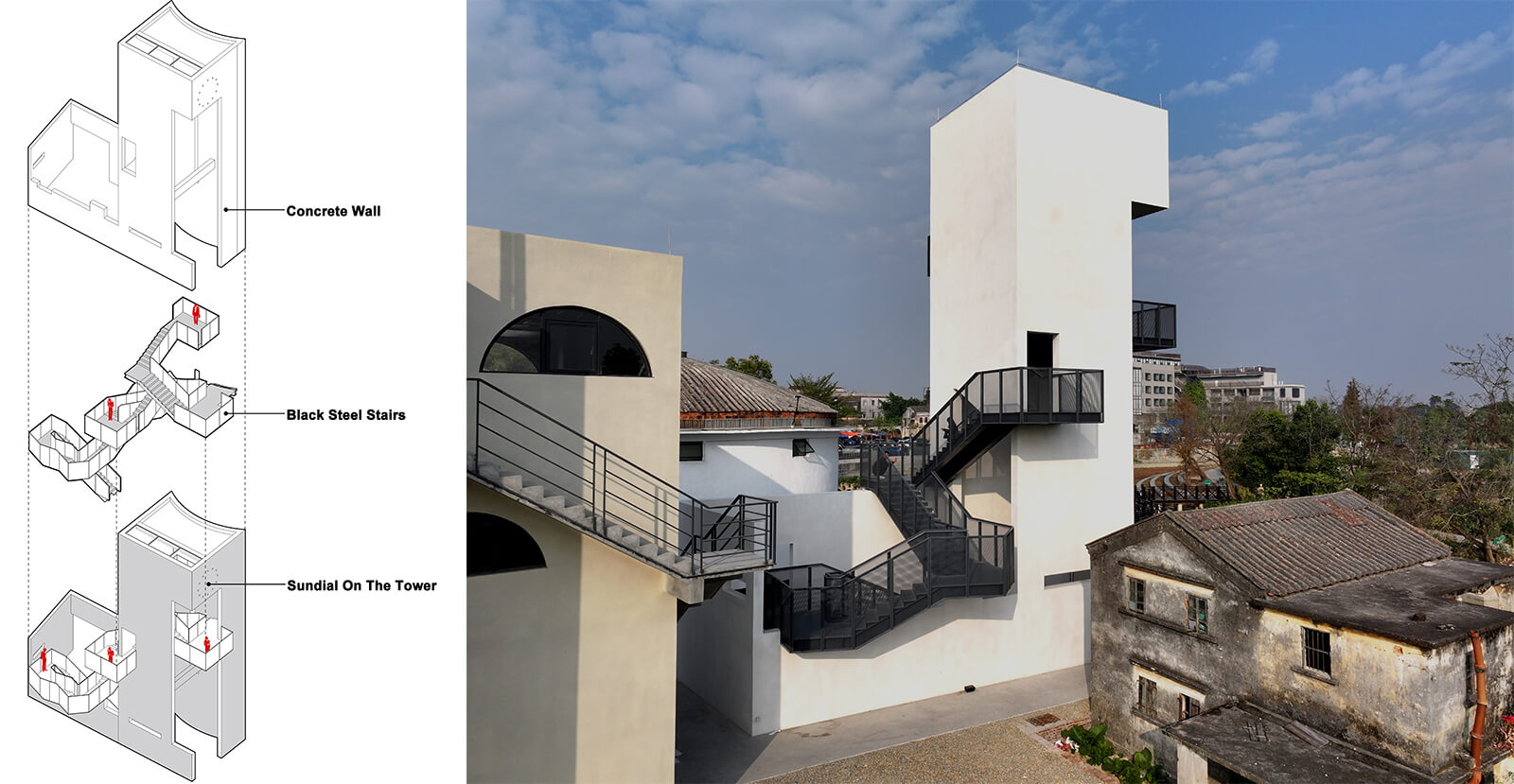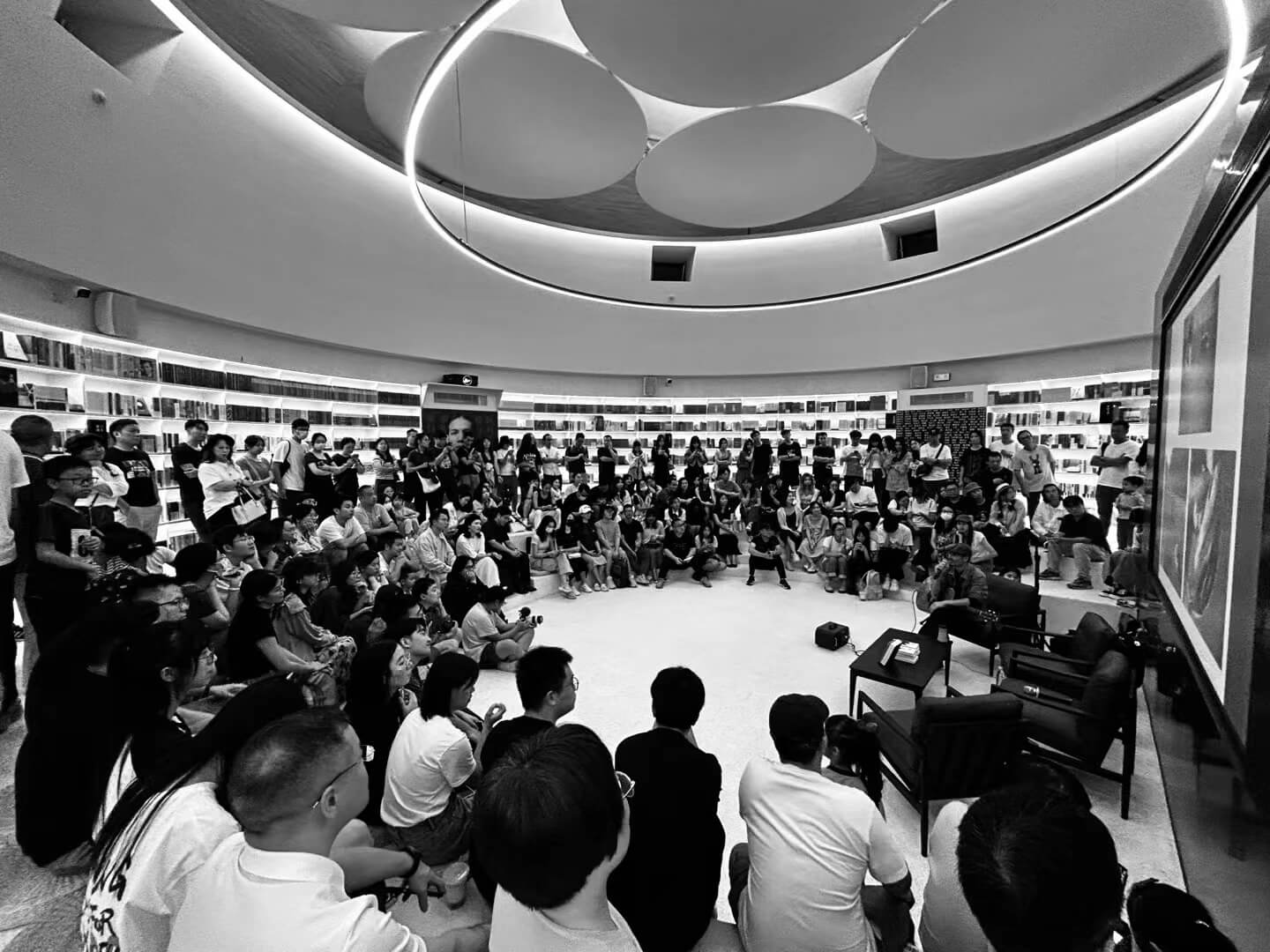The Grand Granary Bookstore is exactly what it’s advertised to be. Described by Art+Zen Architects as a transformation “from material granaries to spiritual granaries”, the project involves the renovation and adaptive reuse of grain silos into a bookstore and public venue. Recently, silos seem to have captured the architectural imagination. From the recently opened Kunstsilo art gallery in Norway to Heatherwick Studio’s Zeitz MOCAA to Bacalan Block, a hotel in France by Colboc Sachet Architects, the possibilities such space and structure offer are now being harnessed, seemingly mostly for art museums and galleries, given the volumes such spaces usually occupy. It helps that they scratch an inherent itch people harbour for brutalist architecture at its best.
As the architects call it, the ‘rural bookstore’ is located in Tangkou Town, Kaiping City, Jiangmen, known famously for the Kaiping Diaolou—the multi-storeyed defensive rural houses which represent a fusion of Chinese and Western structural and decorative forms. Tangkou Town has been recognised as a World Cultural Heritage site and these houses reflect the significant role émigré Kaiping people played in the development of several countries in South Asia.
Referring to this history and fascinated by the unique form of the silos, the Chinese architects decided to design the Librairie Avant-Grade’s Grand Granary Bookstore by taking due advantage of the considerable space the silos afforded. Described as a revitalisation exercise, the project in its effort to create a vibrant cultural space could also be tied to China’s ongoing efforts at the comprehensive development of the country by focusing on its rural areas. Like here, seemingly the cultural architecture of the bookstore is meant to invite people, boosting the local economy. Of the seven silos on site, five were restored and transformed into different rooms of the bookstore. The interventions included restoring the silos to retain their form while updating their functions to create a lively public space.
To restore the silos, the architects used traditional construction techniques to fix leakage issues while keeping the historical character intact. Steel beams were used to reinforce the structure. Within the silos, which boast an area of approximately 165 sqm and a height ranging from 6-8.4 meters, spatial installations were designed that differentiate each room, creating reading nooks and dividing the enormous space to ensure privacy. The installations also utilise clever lighting designs to create a well-lit interior space for the readers in the store, further facilitated by skylights. Bookshelves are designed to circumvent the cylindrical form of the silo with a height not exceeding 2.4 meters, so they are accessible to everyone. Ample seating ensures that visitors can sit and relax while perusing books. The deliberate choice of white in the interior design not only makes the spaces feel more open, but they contrast with some of the black interventions while also ensuring a certain sense of modernity to the design.
Apart from the bookstores, a gallery designed by the architects acts as a connecting corridor for the five granaries. Designed as a multifunctional space, the light steel structure of the gallery roof is detached from the original granary walls, forming an arc-shaped skylight that allows light to filter in, creating a dramatic effect of light and shadow throughout the day. Apart from the five silos that act as bookstores, two buildings on-site were demolished to make room for a new coffee shop and a ‘literary bell tower’, adding to the facilities of the cultural venue. While the café features glass walls and columns that are reminiscent of Frank Lloyd Wright’s famous mushroom columns, the literary bell tower takes inspiration from the Diaolou structures according to the architects. About 17m in height, it gives visitors a panoramic view of the surrounding fields and village. The design, an abstraction of the multi-storeyed heritage structures further asserts the link between heritage and modernity that the project is trying to pursue.
With the main entrance to the west side and a smaller entrance facing the village square, the insertion of the cafe with a glass facade design and bell tower ensures there is a sense of openness to the site. Not only do they add to the facilities on offer, but they ensure there is something for everyone who visits. Apart from the upgradation of the traditional hybrid Chinese architectural structures such as the silo and the Diaolou, other attempts to preserve historical character included refurbishing the exterior walls of the silo, which as the architects mention were painted with special symbols and scenes.
Such small interventions, along with the careful attention to detail paid by the designers to conceal the ducting in the interiors of the bookstore design, make sure the transition from a traditional architecture to a modern design language is seamless. In many ways, it also highlights the aspirational quality still attributed to modern architecture in the non-West in some way. Interestingly, in Towards a New Architecture (1923), the veritable manifesto for modernism, Le Corbusier dedicated an entire chapter to the grain silo. To the modernists who reject ornamentation, these bastions are perfect representations of form following function. It is perhaps their sheer volume that still holds a sense of allure to them, like the cavernous interiors of a church. The question, however, becomes, what do we do with these vestiges of industry today?
Through the project for the bookstore, the architects raise such questions. They also present this ongoing fascination with a certain modern aesthetic in the visual language of a lot of contemporary Chinese architecture. As to what to do with “the magnificent First Fruits of the new age”, perhaps, as the architects have attempted, the answer is to reinvent them completely. Give them back to the community and hope that they serve as places of gathering.
Project Details
Name: Grand Granary Bookstore of Librairie Avant-Garde
Location: Tankou, Kaiping City, Guangdong Province, China
Year of Completion: 2023
Built Area: 1600sqm
Lead Architects: Yang Zhijiang, Zhou Yanlin
Design Team: Fu Zheng, Du Ganyan, Duan Handan, Yang Guang, Li Jijin, Zhou Mincan, Bai Yu, Qiu Junjing, Liliang, Li Xin, Ye Fei, He Haitao, Zhang Lei, Xie Feiran, Mao Kejie, Yao Xiuning


